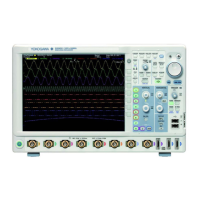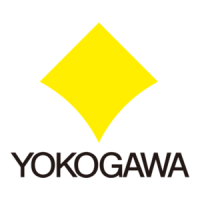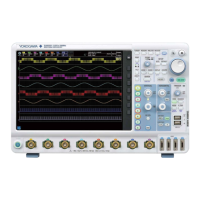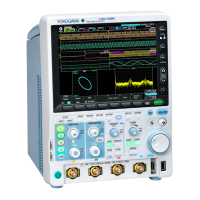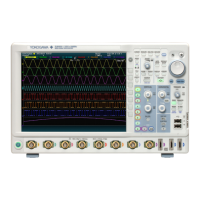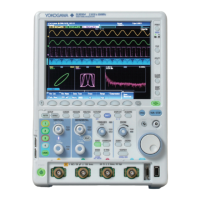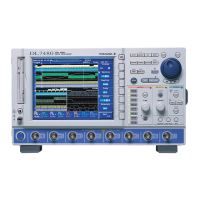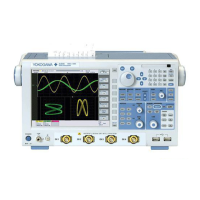5-123
IM 710105-17E
Commands
5
5.19 MATH Group
User-defined computation is an option available only for 4-channel models. User-defined computation commands
cannot be used on 2-channel models or 4-channel models without the user-defined computation option.
:MATH<x>?
Function Queries all computation settings.
Syntax
:MATH<x>?
<x> = 1 or 2 (1 only for 2-channel models)
:MATH<x>:DISPlay
Function Sets or queries whether or not computed
waveforms will be displayed (on/off).
Syntax
:MATH<x>:DISPlay {<Boolean>}
:MATH<x>:DISPlay?
<x> = 1 or 2 (1 only for 2-channel models)
Example
:MATH1:DISPLAY ON
:MATH1:DISPLAY?
-> :MATH1:DISPLAY 1
:MATH<x>:ECOunt?
Function Queries all edge count settings.
Syntax
:MATH<x>:ECOunt?
<x> = 1 or 2 (1 only for 2-channel models)
:MATH<x>:ECOunt:HYSTeresis
Function Sets or queries the hysteresis for the edge
detection level of edge counting.
Syntax
:MATH<x>:ECOunt:HYSTeresis {<NRf>}
:MATH<x>:ECOunt:HYSTeresis?
<x> = 1 or 2 (1 only for 2-channel models)
<NRf> = 0 to 4 (divisions)
Example
:MATH1:ECOUNT:HYSTERESIS 1
:MATH1:ECOUNT:HYSTERESIS?
-> :MATH1:ECOUNT:HYSTERESIS 1.000E+00
:MATH<x>:ECOunt:POLarity
Function Sets or queries the edge detection polarity for
edge counting.
Syntax
:MATH<x>:ECOunt:POLarity {FALL|RISE}
:MATH<x>:ECOunt:POLarity?
<x> = 1 or 2 (1 only for 2-channel models)
Example
:MATH1:ECOUNT:POLARITY FALL
:MATH1:ECOUNT:POLARITY?
-> :MATH1:ECOUNT:POLARITY FALL
:MATH<x>:ECOunt:THReshold
Function Sets or queries the edge detection level for edge-
count computation.
Syntax
:MATH<x>:ECOunt:THReshold {<NRf>|
<Voltage>|<Current>}
:MATH<x>:ECOunt:THReshold?
<x> = 1 or 2 (1 only for 2-channel models)
<Voltage>, <Current> = See the DLM2000
Features Guide for this information.
Example
:MATH1:ECOUNT:THRESHOLD 1
:MATH1:ECOUNT:THRESHOLD?
-> :MATH1:ECOUNT:THRESHOLD 1.000E+00
:MATH<x>:FILTer?
Function Queries all filter settings.
Syntax
:MATH<x>:FILTer?
<x> = 1 or 2 (1 only for 2-channel models)
:MATH<x>:FILTer:FORDer
Function Sets or queries the filter order of an IIR filter.
Syntax
:MATH<x>:FILTer:FORDer {<NRf>}
:MATH<x>:FILTer:FORDer?
<x> = 1 or 2 (1 only for 2-channel models)
<NRf> = 1 or 2
Example
:MATH1:FILTER:FORDER 1
:MATH1:FILTER:FORDER?
-> :MATH1:FILTER:FORDER 1
:MATH<x>:FILTer:HCUToff
Function Sets or queries the cutoff frequency of a high-pass
IIR filter.
Syntax
:MATH<x>:FILTer:HCUToff {<Frequency>}
:MATH<x>:FILTer:HCUToff?
<x> = 1 or 2 (1 only for 2-channel models)
<Frequency> = 0.01 to 500 M(Hz)
Example
:MATH1:FILTER:HCUTOFF 10MHZ
:MATH1:FILTER:HCUTOFF?
-> :MATH1:FILTER:HCUTOFF 10.00E+06
:MATH<x>:FILTer:LCUToff
Function Sets or queries the cutoff frequency of a low-pass
IIR filter.
Syntax
:MATH<x>:FILTer:LCUToff {<Frequency>}
:MATH<x>:FILTer:LCUToff?
<x> = 1 or 2 (1 only for 2-channel models)
<Frequency> = 0.01 to 500 M(Hz)
Example
:MATH1:FILTER:LCUTOFF 10HZ
:MATH1:FILTER:LCUTOFF?
-> :MATH1:FILTER:LCUTOFF 10.00E+00
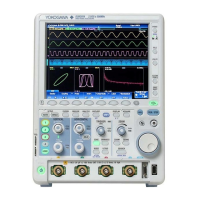
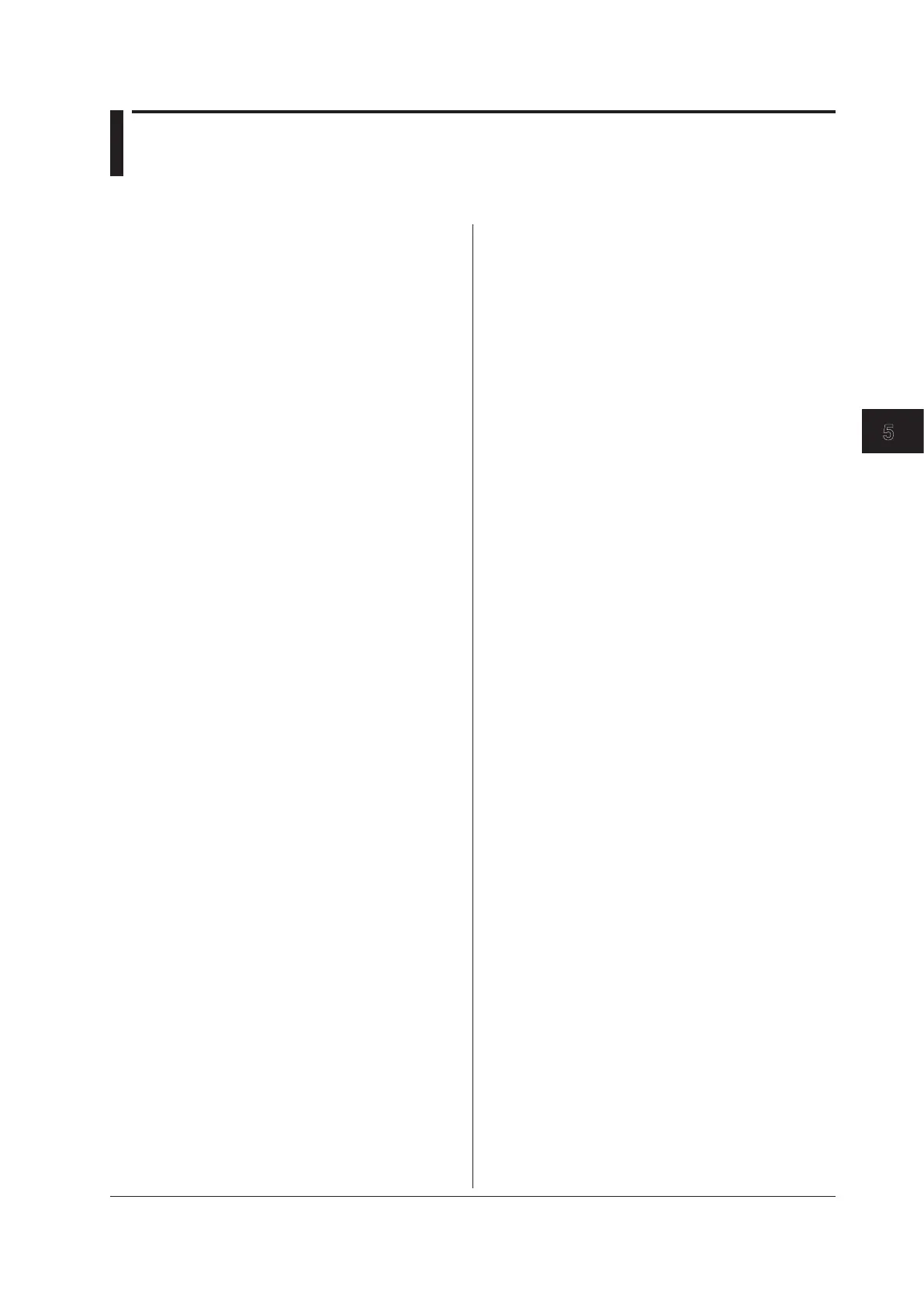